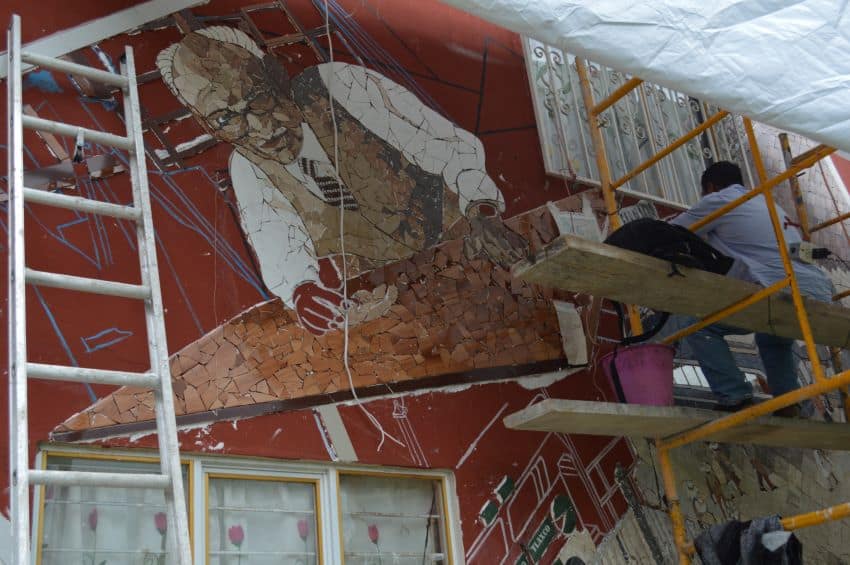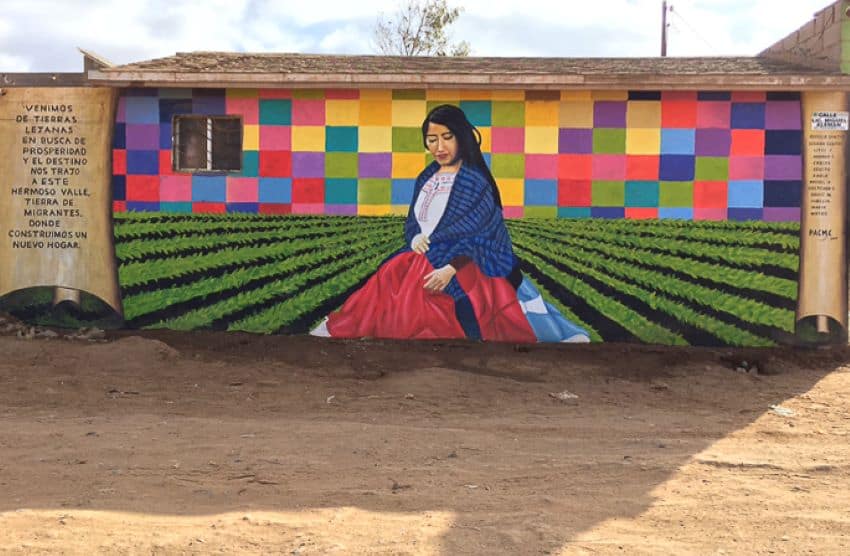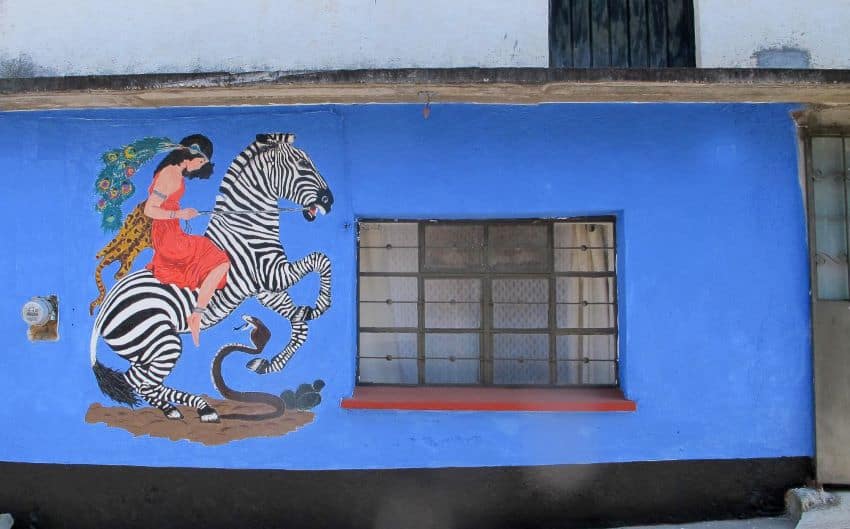Street art has been the muralism of our time, taking graffiti from eyesore to cultural contribution, often with positive messages that neighborhoods and cities can support. How do you make that even better? By having the community get directly involved in the design and execution!
This type of community-minded street art has sprung up all over Mexico without any sort of coordination among organizers, who came to their conclusions and projects via different paths but with quite similar results. It is simply an idea whose time has come.
Mexico News Daily did an article on one artist, Natasha Moraga, who does just that. She is covering Puerto Vallarta in trecadís (broken tile) mosaics with a slew of local and expat volunteers eager to help make the city more beautiful. Turns out she is not the only one.
Mary Carmen Olvera of the town of Zacatlán de las Manzanas is not an artist but an organizer and recruiter par excellence. She is behind various projects in this small town in the Sierra Norte of Puebla, known for its apple orchards and cider.
The murals began as part of the town’s first corn festival in 2014. She recruited United States tile artist Isaiah Zagar to come to Zacatlán. Together, they decided to put an image of Quetzalcóatl in broken tile, glass and mirror near the Jilguero Ravine, a popular tourist attraction. The artist designed the project and taught locals how to place the pieces.

The project was a huge success, and Olvera was hooked. She moved on to the wall surrounding the town’s cemetery.
Using a similar technique, the town created a mural with 12 panels with 12 apples, each having a symbol related to Zacatlán’s history, culture and natural beauty. The back of the cemetery got a mural depicting Nahua cosmology, while the front was covered in biblical scenes.
Believe it or not, this little apple town does have its shady neighborhoods. Olvera subsequently turned her attention to the Callejon del Hueso (Bone Alley), formerly a dark, isolated place with a reputation for drugs. Here, she designed a series of murals based on old photographs for the walls of the houses that line the alley, with owners’ permission and participation. The project is called Zacatlán de mis Recuerdos (Zacatlán of my Memories).
A similar project has been started in Zaccatlán’s Lindavista neighborhood.
Like in Puerto Vallarta, almost all the work being done in Zacatlán is with broken tile, but the small town has added its own twist. They found that by using end nippers (a kind of cutting plier), they can break tiles into smaller and more accurate shapes. This has allowed for very detailed and realistic images.
Elsewhere, in Tepoztlán, Morelos, Judy Wray is a retired U.S. artist who calls her adopted home “paradise.” Her involvement in murals in Tepoztlán, called the Flying Beetle project, came about in part because of a small but growing problem with graffiti and vandalism around her home in the Santisima Trinidad neighborhood, just north of the town center.

Wray has a decades-long history of community art projects of all kinds in both the United States and Mexico, from coloring books to painted hubcaps. Her community murals have been designed by professional artists from as far away as Chile. The murals are then sketched onto walls and painted with acrylic paints and brushes by volunteers or by marginalized people whom Wray pays out of her own pocket.
To promote the work and the people involved, she has had the murals reproduced onto huge microperforated plastic canvas typically used for large-scale advertisements so that they can be seen at events. Wray’s murals are painted along cobblestone streets, which forces drivers to move slowly by and appreciate the work.
In San Quintín, near Ensenada, Baja California, Julia Celeste and Rogelio Santos are both artists and longtime residents who migrated to the area when they were children. San Quintín is a highly diverse area with migrants from all over Mexico, many of whom are indigenous.
It makes for a rich tapestry of cultures and traditions, but it also provokes conflict since many ethnic groups tend to segregate themselves. The hard life of migrants also makes them susceptible to the drug trade.
Although they live in the same valley, Celeste and Santos have separately started community mural projects with the same end, to create and promote a sense of community among the different populations. The murals have themes related to migration, the environment of San Quintín and the native cultures of the migrants.
Both artists’ projects are done with acrylics and brushes, which they say allows for many more people to get involved. Filling in colors with paintbrushes is relatively easy, and the coloring book aspect of it is particularly appealing to children.

All of these projects’ organizers proudly point out the positive benefits the murals have had in their communities. In all cases, none of the murals have had problems with graffiti or other vandalism, even years after the mural has been completed, which is a quite different result than that of many street art murals done by professionals and even major government-sponsored works.
The messages of the murals are important, as they almost always affirm the community’s identity and values. But it is the process of creating the murals that generates the most benefit. People who never thought themselves capable of creativity or of having a positive impact on their community are invited to do just that.
All the organizers have stories of participants who psychologically and even spiritually benefitted from participation and became hooked. Participants proudly show friends and family the parts of the mural they worked on, no matter how small, recruiting more volunteers. Olvera stated that a bricklayer she has known for years found many of his physical and psychological pains eased when he began to help with the initiatives.
Completed projects and their stories have had visible effects in their immediate surroundings. Adjoining parks and streets are better taken care of. Callejon de Hueso now sees tourism and new businesses, and both Celeste and Santos report that many mural participants have created friendships with people outside their insular circles.
Leigh Thelmadatter arrived in Mexico 17 years ago and fell in love with the land and the culture. She publishes a blog called Creative Hands of Mexico and her first book, Mexican Cartonería: Paper, Paste and Fiesta, was published last year. Her culture blog appears regularly on Mexico News Daily.
